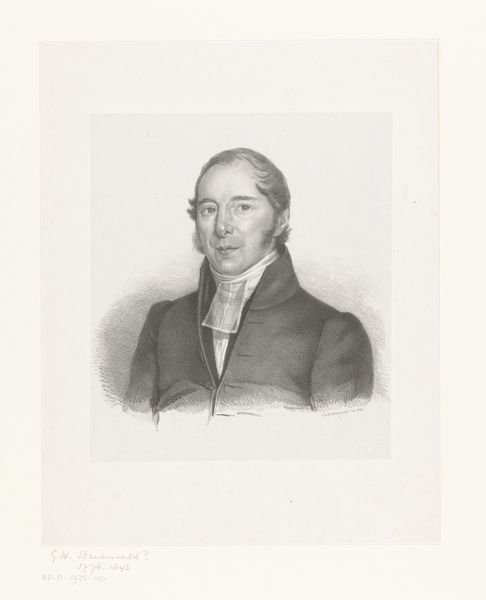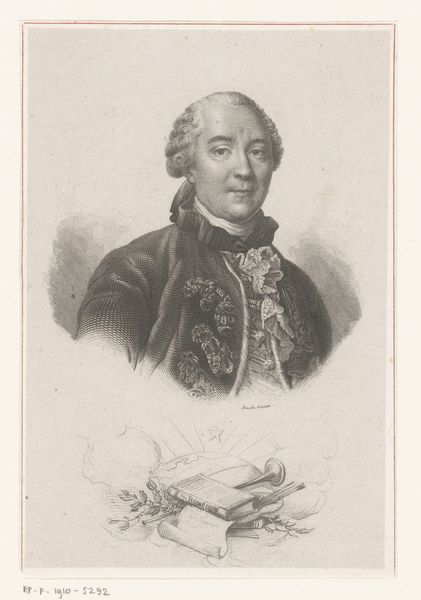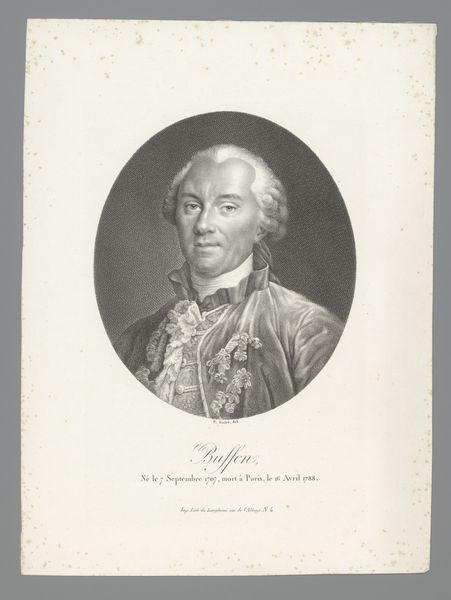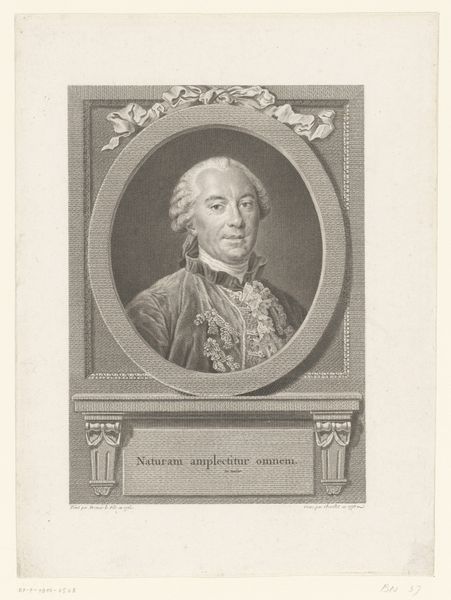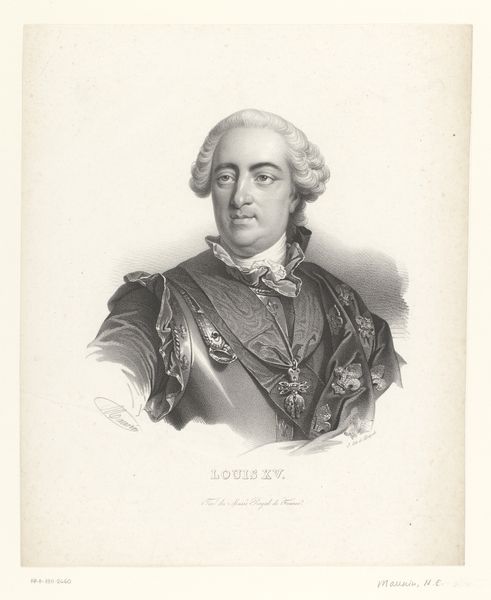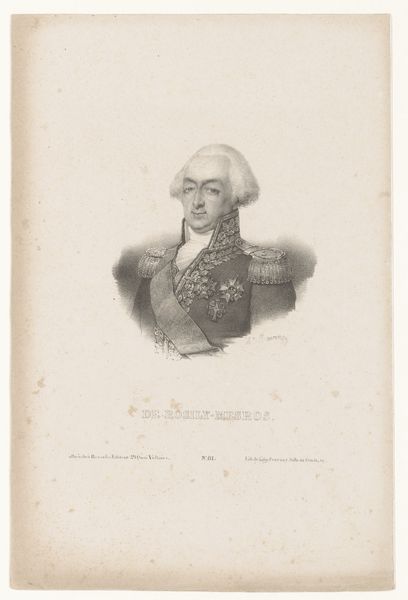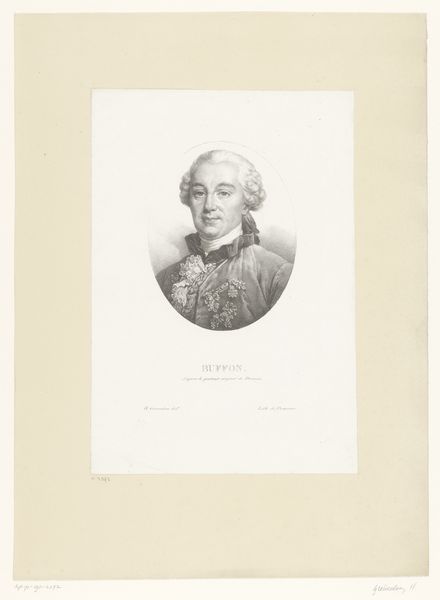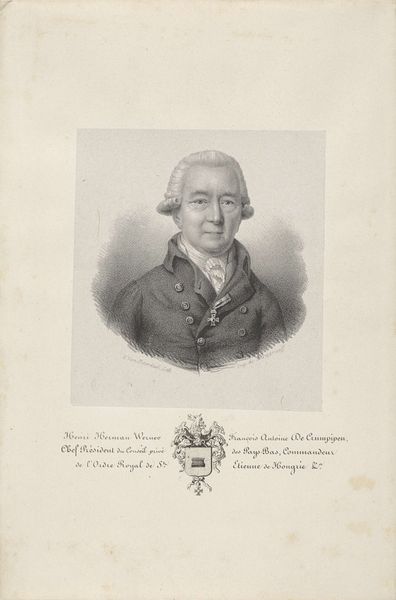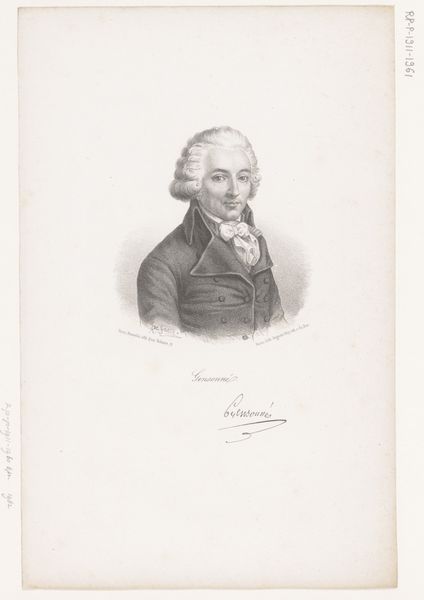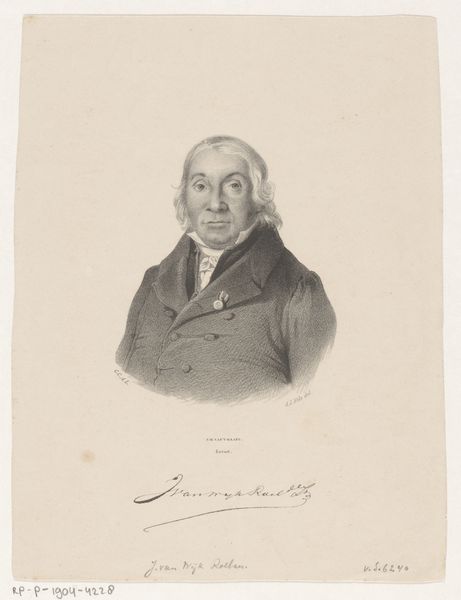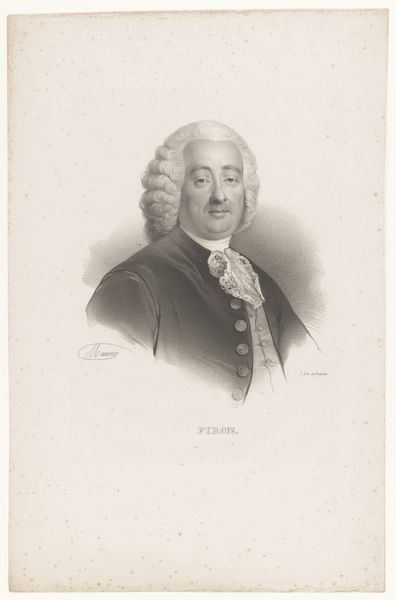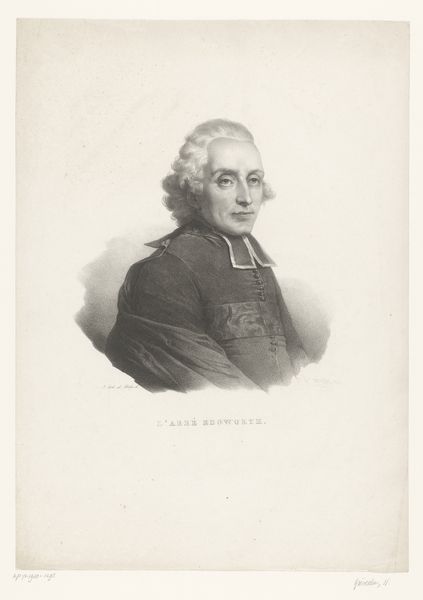
drawing, print, engraving
#
portrait
#
pencil drawn
#
drawing
#
neoclacissism
# print
#
pencil sketch
#
pencil drawing
#
portrait drawing
#
engraving
Dimensions: height 468 mm, width 312 mm
Copyright: Rijks Museum: Open Domain
Curator: This is a portrait of Georges-Louis Leclerc, Comte de Buffon, the famous French naturalist, mathematician, and cosmologist. It's estimated to be from around 1838. Editor: My first impression is the level of detail achieved in what appears to be an engraving, and the contrast; there’s a real delicacy to the rendering of the face and clothing. It definitely evokes the formality and powdered wigs of the Enlightenment. Curator: Precisely! Though a later print, it certainly captures the Neoclassical style and its fascination with reason and order. Buffon himself was a towering figure of that intellectual movement, and this image, rendered in such a clean, precise manner, seems to amplify his authority and influence. He had a major public presence. Editor: Public presence certainly, and I wonder about that powdered wig and ornate jacket with frothy ruffles. It tells me much about privilege, the performance of status, and the highly mannered rituals of aristocratic life. In many ways it also speaks about who was excluded, like, the working classes, women... Curator: That's a crucial point. Buffon’s work and image, much like those of other Enlightenment thinkers, circulated widely, shaping perceptions of knowledge and nature but almost exclusively among a privileged class. Artworks like these reinforced existing hierarchies by visually codifying who held power. The portrait wasn't just a likeness; it was a carefully constructed statement of social standing. Editor: Absolutely. I'm drawn to the somewhat cool and composed expression too. It makes you think about how individuals, particularly those in positions of power, controlled their own image and how they were presented to the world through art. And whose story we see reflected in these artworks of the past. Curator: Well, I agree, the history of portraits always prompts us to confront questions of representation. Now it's clear, our conversation about this image helps us explore how portraiture and the history of science intersect, revealing power dynamics and biases that continue to echo today. Editor: Agreed. Even a simple portrait can hold multitudes, right?
Comments
No comments
Be the first to comment and join the conversation on the ultimate creative platform.
